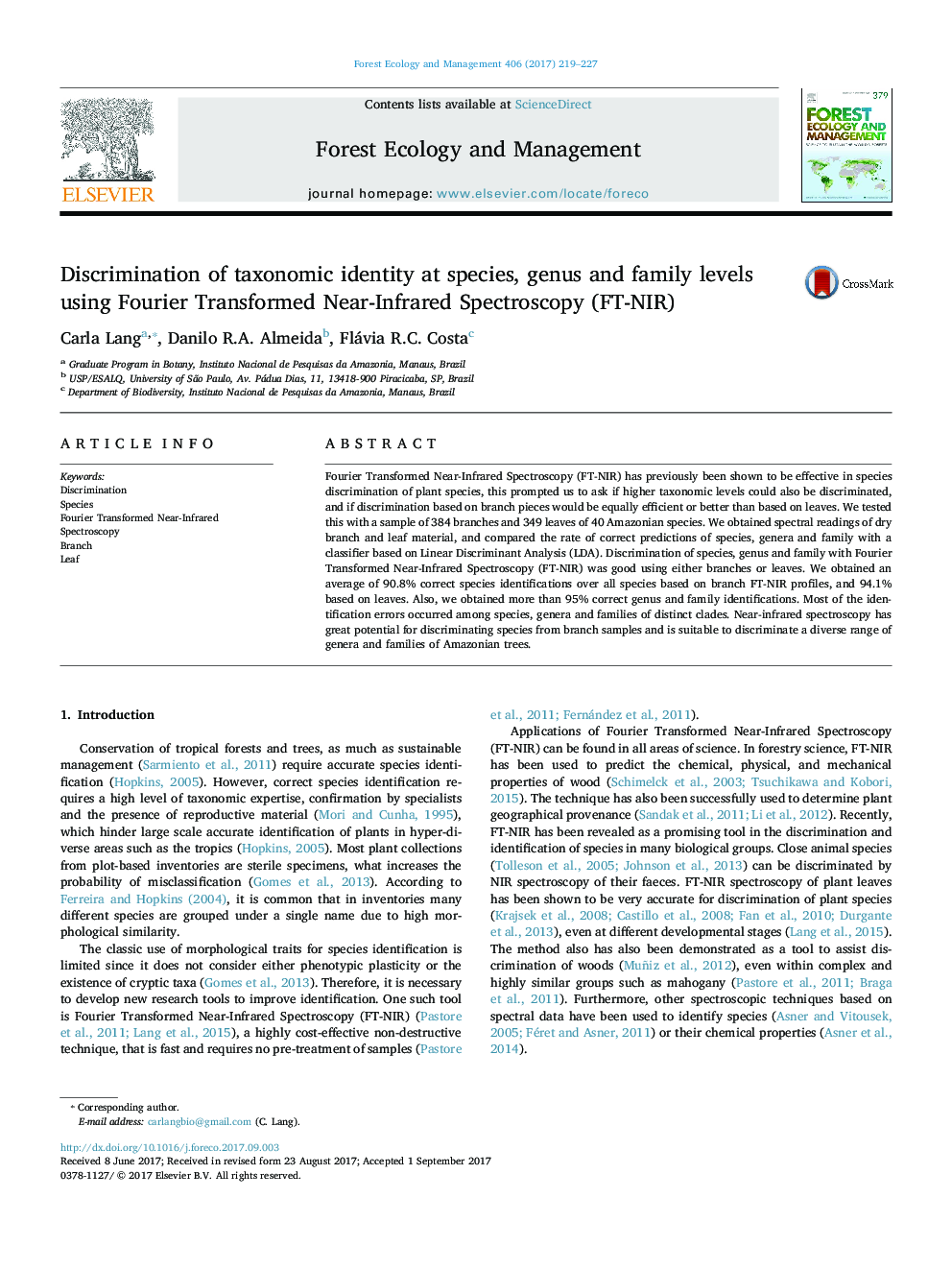| Article ID | Journal | Published Year | Pages | File Type |
|---|---|---|---|---|
| 6459004 | Forest Ecology and Management | 2017 | 9 Pages |
•Discrimination of taxonomic identify with near-infrared spectroscopy (FT-NIR) was very good either using branches or leaves.•Near-infrared spectroscopy has great potential for discriminating species from branch samples of Amazonian trees.•Near-infrared spectroscopy is suitable to discriminate a diverse range of genera and families of Amazonian trees.
Fourier Transformed Near-Infrared Spectroscopy (FT-NIR) has previously been shown to be effective in species discrimination of plant species, this prompted us to ask if higher taxonomic levels could also be discriminated, and if discrimination based on branch pieces would be equally efficient or better than based on leaves. We tested this with a sample of 384 branches and 349 leaves of 40 Amazonian species. We obtained spectral readings of dry branch and leaf material, and compared the rate of correct predictions of species, genera and family with a classifier based on Linear Discriminant Analysis (LDA). Discrimination of species, genus and family with Fourier Transformed Near-Infrared Spectroscopy (FT-NIR) was good using either branches or leaves. We obtained an average of 90.8% correct species identifications over all species based on branch FT-NIR profiles, and 94.1% based on leaves. Also, we obtained more than 95% correct genus and family identifications. Most of the identification errors occurred among species, genera and families of distinct clades. Near-infrared spectroscopy has great potential for discriminating species from branch samples and is suitable to discriminate a diverse range of genera and families of Amazonian trees.
